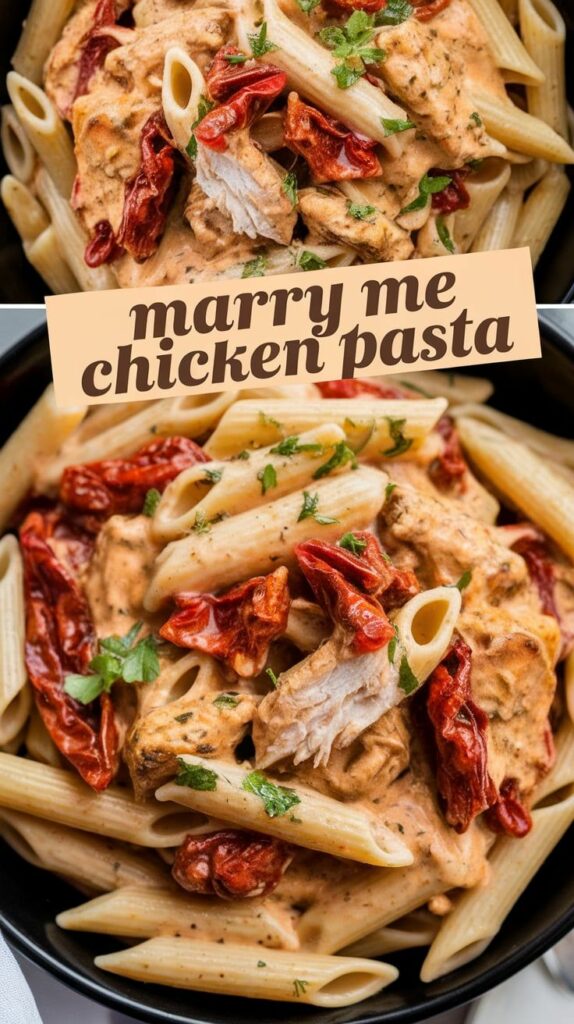Cracking the code to a perfect homemade lobster tail recipe isn’t as complicated as you might think. I’ve spent years perfecting techniques that transform simple seafood into a restaurant-quality dish that will impress even the most discerning palates.
This guide will walk you through creating succulent lobster tails right in your own kitchen. From selecting the freshest ingredients to mastering cooking techniques, I’ll share my insider secrets that guarantee a delectable seafood experience every single time.
Whether you’re planning a romantic dinner or want to elevate a special occasion, my lobster tail recipe will help you create a show-stopping meal that looks and tastes like it came straight from a high-end restaurant. Get ready to surprise yourself with your culinary skills!
In the following sections, I’ll break down everything you need to know about preparing the most tender, flavorful lobster tails. You’ll learn about ingredient selection, preparation methods, and presentation tips that will make you feel like a professional chef.
The Best Lobster Tail Recipe for Special Occasions
Preparing the perfect lobster tail can transform an ordinary meal into an extraordinary dining experience. As a passionate home cook, I’ve perfected a best lobster tail recipe that guarantees restaurant-quality results every time. This special occasion seafood dish is simpler to prepare than you might imagine.
Why This Recipe Works
Cooking lobster tails requires precision and understanding of seafood techniques. My method ensures tender, succulent meat with a rich flavor profile that will impress even the most discerning dinner guests. The secret lies in controlling lobster tail cooking time and using the right preparation techniques.
What You’ll Need for Success
- Fresh lobster tails (4-6 oz size)
- Unsalted butter
- Fresh herbs (parsley, chives)
- Garlic
- Sea salt
- Black pepper
- Baking sheet
- Kitchen shears
- Instant-read thermometer
Time and Serving Size
| Preparation Time | Cooking Time | Servings |
|---|---|---|
| 15 minutes | 10-12 minutes | 4 people |
I recommend purchasing approximately 4-6 oz lobster tails per person for an optimal dining experience. The cooking time varies slightly depending on the size of your lobster tails, but typically ranges between 10-12 minutes at 425°F.
Essential Ingredients for Tender Lobster Tails
Crafting the perfect lobster tail recipe starts with selecting the right lobster tail ingredients. I’ll guide you through the essential components that transform an ordinary seafood dish into a culinary masterpiece.
For the most delectable lobster tails, you’ll need a carefully curated selection of ingredients. Let me break down the key elements that ensure a mouthwatering result:
- Fresh lobster tails (4-6 oz each)
- High-quality unsalted butter
- Fresh garlic cloves
- Sea salt and fresh cracked black pepper
- Fresh herbs (parsley, chives, or dill)
The magic of seafood seasoning can elevate your lobster tails from good to extraordinary. I recommend a simple yet flavorful blend that complements the delicate meat:
- Paprika for subtle warmth
- Dried thyme
- Garlic powder
- Kosher salt
For an irresistible butter sauce for lobster, you’ll want to combine melted butter with fresh herbs and a touch of lemon juice. The key is to keep the sauce light and complementary, allowing the lobster’s natural flavors to shine through.
Pro tip: Always use fresh ingredients and avoid over-seasoning. The goal is to enhance, not overpower, the delicate flavor of the lobster tail. A little restraint goes a long way in creating a truly memorable seafood dish.
How to Choose and Prepare Fresh Lobster Tails
Selecting the perfect lobster tails can make or break your seafood dining experience. I’ll guide you through the essential steps of how to choose lobster tails that will impress your guests and deliver exceptional flavor.
Picking high-quality lobster tails requires careful consideration. Fresh seafood markets and reputable grocery stores offer the best selections for discerning home chefs.
Selecting Top-Quality Lobster Tails
- Look for bright, translucent meat with a clean ocean smell
- Avoid tails with discoloration or strong fishy odors
- Choose sizes between 4-8 ounces for optimal tenderness
- Check for firm, intact shells without cracks
Thawing Lobster Tails Safely
Proper thawing lobster tails is crucial for maintaining texture and preventing bacterial growth. I recommend the refrigerator method for best results.
- Remove frozen lobster tails from packaging
- Place on a tray lined with paper towels
- Refrigerate for 8-12 hours
- Pat dry with paper towels before preparation
Mastering the Butterfly Cut Technique
A butterfly cut lobster tail not only looks professional but ensures even cooking and an elegant presentation.
| Cutting Step | Description |
|---|---|
| 1. Prepare Scissors | Use sharp kitchen shears |
| 2. Cut Shell | Slice down middle of shell, stopping at base of tail |
| 3. Separate Meat | Gently lift meat from shell, keeping base attached |
| 4. Unfold Meat | Rest meat on top of shell for beautiful presentation |
By following these expert techniques, you’ll transform your lobster tails from ordinary to extraordinary, ensuring a restaurant-quality meal right in your own kitchen.
Step-by-Step Cooking Instructions
Learning how to cook lobster tails can transform your seafood dining experience. I’ll guide you through two popular methods: baking and grilling lobster tails that will impress your guests and elevate your culinary skills.
Baking Lobster Tails
Baking lobster tails is a foolproof method for achieving tender, succulent seafood. Follow these simple steps:
- Preheat your oven to 425°F
- Butterfly the lobster tails by cutting the top of the shell lengthwise
- Gently separate the meat from the shell, keeping the base attached
- Brush the meat with melted butter and your favorite seasonings
- Place tails on a baking sheet
- Bake for 12-15 minutes until meat turns opaque and reaches 140-145°F internal temperature
Grilling Lobster Tails
Grilling lobster tails adds a delightful smoky flavor that enhances the natural sweetness of the meat. Here’s my recommended technique:
- Preheat grill to medium-high heat (around 400-450°F)
- Prepare lobster tails using the butterfly method
- Brush with olive oil and season with salt and pepper
- Place meat-side down on the grill
- Grill for 5-6 minutes per side
- Watch carefully to prevent overcooking
Pro tip: The key to perfect lobster tails is avoiding overcooking. Use a meat thermometer to ensure precise doneness and maximum flavor.
Butter Sauce and Seasoning Combinations
Elevating your lobster tail from good to extraordinary requires mastering the art of butter sauce and lobster seasoning. The right combination can transform your seafood dish into a culinary masterpiece that delights the senses and impresses dinner guests.
Classic Garlic Butter Sauce
My go-to lobster tail butter sauce starts with simple, fresh ingredients. Here’s a foolproof recipe that brings out the best in your seafood:
- 1/2 cup unsalted butter
- 4 cloves minced garlic
- 2 tablespoons fresh parsley
- 1 tablespoon lemon juice
- Salt and pepper to taste
To prepare, melt butter in a small saucepan, add minced garlic, and cook until fragrant. Stir in parsley and lemon juice. This classic lobster seasoning creates a rich, aromatic sauce that complements the delicate lobster meat perfectly.
Herb and Citrus Options
Experiment with these exciting variations to keep your lobster tail recipe interesting:
- Dill and Lemon Butter Sauce
- Cajun-Inspired Seasoning Blend
- Herb de Provence Butter
Wine Pairing Suggestions
Selecting the right wine can elevate your lobster tail experience. Here’s a quick guide to wine pairing with lobster:
| Lobster Preparation | Recommended Wine | Flavor Profile |
|---|---|---|
| Butter-Poached Lobster | Chardonnay | Creamy, Buttery |
| Grilled Lobster Tail | Sauvignon Blanc | Crisp, Citrusy |
| Spicy Lobster | Riesling | Sweet, Balanced |
Tips for Achieving Perfect Texture and Flavor
Cooking lobster tails can be tricky, but with the right lobster tail cooking tips, you’ll master this delicate seafood dish. The key to avoiding rubbery lobster is understanding precise cooking techniques and timing.
Achieving the perfect lobster tail doneness requires careful attention to several critical factors. I’ll share my top strategies for ensuring your lobster tails turn out tender and delicious every time.
- Watch cooking time carefully – most lobster tails need just 1-2 minutes per ounce
- Use a meat thermometer to check internal temperature (aim for 140-145°F)
- Remove from heat when meat turns opaque and slightly firm
- Allow a brief resting period after cooking to retain moisture
Temperature control is crucial when preventing rubbery texture. I recommend using gentle cooking methods like steaming or baking to maintain the lobster’s delicate protein structure.
| Cooking Method | Recommended Time | Temperature |
|---|---|---|
| Baking | 10-12 minutes | 425°F |
| Steaming | 5-8 minutes | 212°F |
| Grilling | 4-5 minutes | Medium-high heat |
Marinating your lobster tails for 15-30 minutes before cooking can enhance flavor and help prevent drying out. A simple blend of olive oil, lemon juice, and herbs works wonders for creating a mouthwatering seafood experience.
Serving Suggestions and Presentation Ideas
When it comes to how to serve lobster tails, presentation can elevate your seafood dish from simple to spectacular. I recommend placing the beautifully cooked lobster tail on a clean white plate, allowing the golden-brown meat to be the star of the show. A sprinkle of fresh chopped parsley or a delicate lemon wedge can add that professional restaurant-quality touch to your lobster tail plating.
For complementary lobster tail side dishes, I suggest pairing your seafood with light and elegant options. Roasted asparagus, garlic-infused risotto, or a crisp summer salad work wonderfully. These sides not only enhance the lobster’s rich flavor but also create a balanced meal that looks stunning on the plate. Consider using white plates to make the vibrant colors of your lobster and sides pop.
Garnishing is key to impressing your guests. A drizzle of herb-infused butter, a small ramekin of additional sauce on the side, or even edible flowers can transform your dish. Fresh herbs like chives or dill can add a pop of color and fresh flavor. Remember, the visual appeal of your lobster tail presentation is just as important as its taste.
By focusing on these simple yet elegant serving techniques, you’ll create a memorable dining experience that looks like it came straight from a high-end seafood restaurant. With a bit of creativity and attention to detail, your lobster tail will be the centerpiece of an unforgettable meal.



